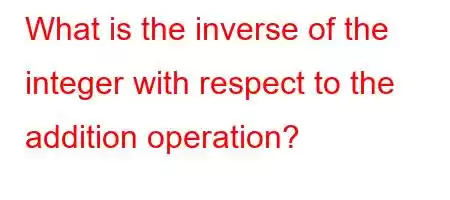What is the inverse of the Object Integer with respect to the addition operation?
Contents
What is the inverse of an integer with respect to addition?
To find the inverse of a number by addition, we change the sign of the number. The inverse of +9 with respect to addition is –9 because the sum of these two numbers is 0.
Does the inverse sign change according to multiplication?
Thus, to find the numerator according to multiplication, and the denominator is replaced. For a number without an inverse in a multiplication operation, the numerator and denominator are not changed. In this case, numbers without inverses are obtained by multiplication.
What is the inverse of a fraction by multiplication?
'Relating two rational numbers whose product is 1 the inverse is called the inverse of the multiplication operation. Thus, as a result of the operation performed on two rational numbers, the result is always 1. Knowing this exactly provides great convenience in the mathematical operations to be done.
What is the inverse of the largest negative integer according to the addition operation?
Reversing the positive and negative numbers according to the addition operation, if the numbers are negative positive means it is negative. When each number is reversed by addition, the sum of the numbers is always zero.
What is its inverse by operation?
What Does a Number Inverse Mean by Multiplication? The answer to the question of which number is multiplied by which number yields a result reveals the inverse operation of this number within the scope of multiplication. In other words, as a result of this operation, it produces a result with its inverse compared to the multiplication operation.
Does the addition operation have the property of changing and combining?
This Here is a brief summary of the properties: The commutative property of the addition operation: Changing the order of the added terms does not change the sum. For example, 4 + 2 = 2 + 4 4 + 2 = 2 + 4 4+2=2+44, plus, 2, equals, 2, plus, 4. Associative property of addition: Changing the grouping of added terms does not change the sum.< /p>
How to find the inverse of a rational number with respect to multiplication?
It is called 'The inverse of two rational numbers whose product is 1, relative to each other, and the inverse of the multiplication operation'. Thus, as a result of the operation performed on two rational numbers, the result is always 1.
Read: 200


